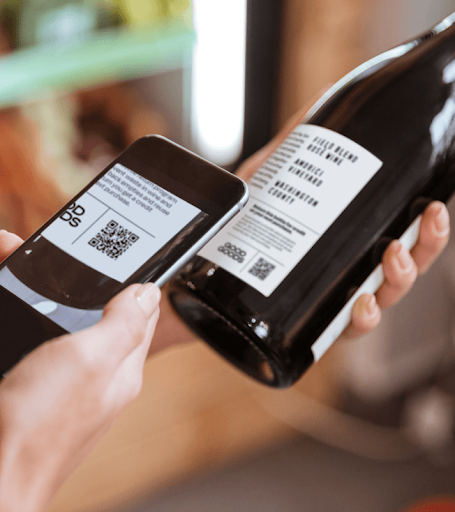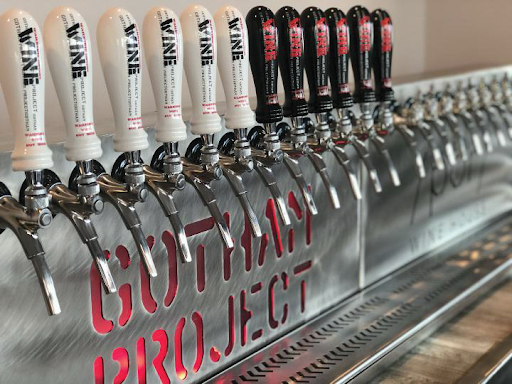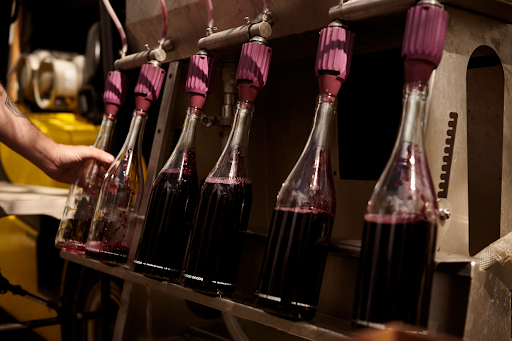Glass Half Full: Gotham Project Reduces Waste in the Wine Industry

In 2020, United States residents drank an estimated one billion gallons of wine; and hey, after an absolute nightmare of a year, who can blame us? With wine consumption on the rise, more and more glass bottles are being manufactured — one billion gallons of wine equates to over five million regular-sized wine bottles! — and the majority of them are only used once. Although glass isn’t as detrimental to the planet as plastic, many consumers treat the two materials the same way: Using them once and then disposing of them, to be dumped into landfills or the occasional recycling center. It’s simply the culture of capitalism to throw something away after it serves its immediate purpose, especially regarding food & beverages; but glass containers actually hold the potential to be reused over and over again. Some inventive Solutionists are using this advantage to promote circularity and fight waste in the wine department.
Good Goods: “Same bottle. Better future.”
Today, there are multiple companies creating refillable wine bottle programs. Good Goods is a frontrunner of this movement, acting as a more eco-friendly middleman between wine producers and wine consumers to help give glass bottles a longer life. Based upon what they call the “milkman” model, Good Goods supplies durable glass bottles to wine producers; which are then filled and shipped to stores, and then purchased by customers. But instead of going to the recycling bin, Good Goods asks that customers bring their bottles back to the store. The customer simply scans a QR code to confirm their return (which gives them a discount voucher towards their next bottle!), and then the bottles go back to Good Goods to be washed before the entire cycle begins again. It’s a win-win solution, giving wine producers and consumers alike the incentive to participate and use the “same bottle for a better future.”
Although this circular system is currently only offered at a few wine shops in New York state, the idea is simple and effective, and it could easily be introduced to additional locations. If you happen to have connections to anyone in the wine or beverage industry, let them know about this initiative and tell them to reach out to Good Goods — they are eager to connect with new partners to grow their program.

Gotham Project’s “Wine on Tap”
The company Gotham Project has been running a return program similar to Good Goods’ for years, with participating locations in New York, Massachusetts, and Colorado. Recently, they’ve started another waste-saving system for wine lovers: Wine on tap! Although they didn’t invent the process, Gotham Project is pioneering the wine-on-tap movement and working to make it a more mainstream method in the beverage industry.
Instead of buying a case of individual wine bottles, a restaurant/business can buy a keg of Cabernet Sauvignon (or 30+ other wines) from Gotham Project — which will work with most of the same equipment used for standard beer kegs. Not only is it cheaper and more convenient to transport and manage one keg of wine over multiple glass bottles, but it’s also significantly more sustainable: Over the course of its lifespan, one keg saves about 3,000 bottles, including closures, foils, and labels! That’s a ton of potential in just one 19.5 liter container — and according to Gotham Project, it’ll help keep the wine fresher, too. Once the keg is empty, it’s returned to Gotham Project to be used again and again. If you know of a business that could benefit from this system, spread the word and feel free to contact Gotham Project through their website.

“Wine” These Programs Are Important
So what’s the big deal about glass bottles? Well, the manufacturing of the glass bottle makes up more than 50% of the carbon footprint of one bottle of wine — not to mention the added carbon emissions caused by shipping & transporting so many heavy bottles. Simply put, the Solutionists mentioned above (and more!) recognize the reusability of glass, as well as the potential to eliminate much of these associated carbon emissions. By bringing back and adapting onto circular systems from the past (i.e. the “milkman” model), these companies are showing us that we can collectively make a huge impact by making some seemingly small changes in our behavior. Gotham Project estimates that their return program has saved over five million single-use bottles from being tossed in the trash — close to the total number of bottles drank by Americans last year!
It’s important to note that programs like these rely on our collective participation: If no one brings back their bottles to the store, then companies like Good Goods and Gotham Project have none to circulate. Considering that only around 30% of glass is actually recycled, recycling is wishful thinking at this point; but building systems that give continued life to usable materials, and that encourage us all to work together towards protecting the planet, is how we can create lasting change. It’s about a change in mindset, recognizing that the materials we often throw away without a second thought can actually be used again and again to help us avoid more waste in the long run.
It can be a bit difficult to shift your perspective at first, living in a society that encourages convenience and disposability over mindful purchasing and longevity… Only 2% of consumer packing today is reusable, so it’s clear that at the highest levels, our current system does not support sustainability. But that doesn’t mean that solutions aren’t out there! Companies like Good Goods and Gotham Project are setting an example for businesses everywhere, showing us that it’s entirely possible to turn a profit while utilizing systems that don’t harm the environment; and they need our support, so that these more eco-friendly methods can one day replace the outdated practices of the past (and present).

How You Can Help
By supporting initiatives like bottle returns and wine on tap, you can help fuel the shift towards sustainability. It’s not solely about Chardonnay — there are ways to reuse almost everything, everywhere!
- At home, try to repurpose glass containers like sauce jars to hold household items or things like homemade salad dressing. You can also take those jars to a bulk store near you (here’s a handy locator), where you can purchase tons of foods & ingredients without the plastic packaging.
- Instead of paper towels, try cutting up some old clothes/sheets/cloth towels into squares or strips to clean up messes, which can easily be thrown in the laundry. This keeps those textiles out of the landfill and saves you money in the long run!
- Get creative! There are countless ways to use “disposable” materials in crafts, gift wrapping, etc. A quick google search for “how to reuse ____” will yield a ton of different results — here’s a helpful article for how to reuse 13 things you would normally throw away.
- Try turning to TikTok for inspiration. I can’t believe how many zero waste life hacks I see on there! Look up hashtags like #reuse and #zerowaste; and if you’re able, consider supporting some TikTok small businesses who turn used stuff into new.


Leave a Reply